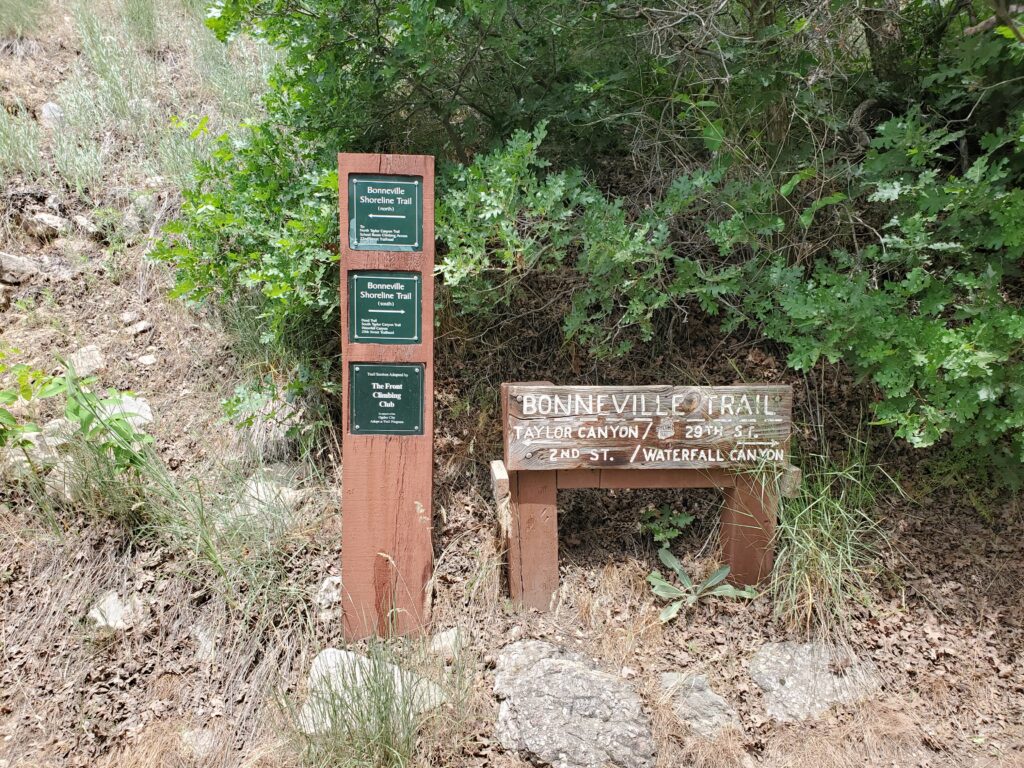December 30, 2023: 7.9 miles official BST. Trailforks hike log

Almost done with this whole endeavor! We had actually planned to finish off by the end of the year by doing the last two hikes in two days (we stayed in Logan overnight), but the first day was killed when my car was broken into at the Trailhead while we were driving to the other end to start :-(, so we did the first hike on the second day. It turned out okay, because the trail segment where we are planning our grand finale is a muddy mess at the moment. Stay tuned…
So, today’s hike was the southern segment that is official BST in Cache County, from Blacksmith Fork in Hyrum to Dry Canyon in Logan. We were joined by Landis Wegner, who has been the trails coordinator for Cache County for about a year. While the county government does not actually own or maintain any trail of its own, they actually have set up a good structure here. Landis’ office is co-funded by the county and several cities, so he can help them develop a county-wide trails network, without each of the small towns having to hire their own trail expert. He also partners with the Cache Trails Alliance, a non-profit organization that represents the wide variety of trail users across the valley. Together with government land owners such as the Forest Service and the state Division of Wildlife Resources, they have been quite successful at building and designating new trail, but more importantly, in fostering a strong sense of trail stewardship in this community. In fact, designating this segment of the Bonneville Shoreline Trail was one of the first major successes of this partnership back in 2009. We talked about a lot of projects that Landis is working on to develop new trails across the valley, including several segments of the BST.
This segment of the trail is called the “Deer Fence” for good reason. Almost the entire length is next to an eight foot high fence built to keep big game (mostly deer and elk) in the Providence-Millville Wildlife Management Area and out of the farms and homes below. The fence maintenance road made a very convenient existing route to designate as the Bonneville Shoreline Trail. By and large, the trail is at a good elevation and is in great shape. Unfortunately, the fence diminishes the view of the valley; we were mostly done before I realized that I had hardly ever looked out over the valley. It also cuts a straight line down and up every drainage, rather than a modern trail that would traverse it horizontally. All told, we climbed about 1,700 feet, even though the end trailhead is only 400 feet higher than the beginning.
That said, it is not a bad “Version 1” trail; perhaps it could eventually be rerouted into a better Version 2, which would only require detours of 100 feet or so. One stretch might need this sooner than the rest, as the fence runs through the back of several subdivision lots in Providence. Although the approval for the fence and the BST predates the subdivision, but the new residents want the trail moved to a better location; so do many of the local trail users. However, it is not at all clear who is responsible for building a new trail here, and who should pay for it (IMHO, it should have been the developer), so for now, the status quo remains.
A major highlight of the hike was the Utah Field Station, commonly known as the “Coyote Farm.” This is a cooperative research facility of the US Department of Agriculture and Utah State University, where they have been studying wild predators (especially coyotes and wolves) since 1972. It looks a little like a zoo from above. While we were filming, a couple started to howl and the entire population joined in, creating an amazing wave of noise (apparently this happens several times a day). It probably drives nearby residents crazy, but we thought it was awesome, and I hope it turns out well on the final episode.
Just one more hike to go! Spencer is getting married in February (yay!), so it is now looking like we will be back in Logan to film the finale sometime in the Spring.

















